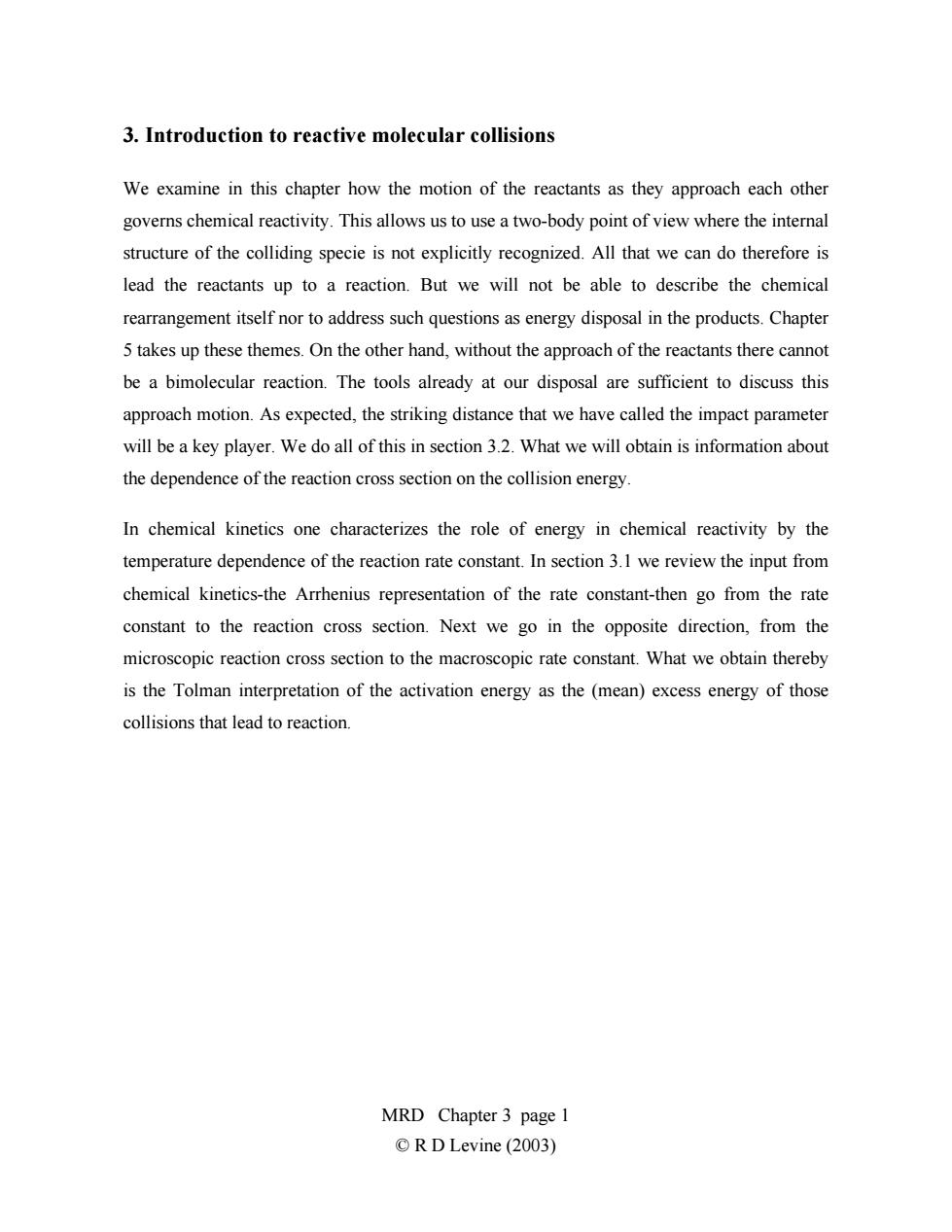正在加载图片...

3.Introduction to reactive molecular collisions We examine in this chapter how the motion of the reactants as they approach each other governs chemical reactivity.This allows us to use a two-body point of view where the internal structure of the colliding specie is not explicitly recognized.All that we can do therefore is lead the reactants up to a reaction.But we will not be able to describe the chemical rearrangement itself nor to address such questions as energy disposal in the products.Chapter 5 takes up these themes.On the other hand,without the approach of the reactants there cannot be a bimolecular reaction.The tools already at our disposal are sufficient to discuss this approach motion.As expected,the striking distance that we have called the impact parameter will be a key player.We do all of this in section 3.2.What we will obtain is information about the dependence of the reaction cross section on the collision energy In chemical kinetics one characterizes the role of energy in chemical reactivity by the temperature dependence of the reaction rate constant.In section 3.1 we review the input from chemical kinetics-the Arrhenius representation of the rate constant-then go from the rate constant to the reaction cross section.Next we go in the opposite direction,from the microscopic reaction cross section to the macroscopic rate constant.What we obtain thereby is the Tolman interpretation of the activation energy as the(mean)excess energy of those collisions that lead to reaction. MRD Chapter 3 page 1 ©RD Levine(2003)3. Introduction to reactive molecular collisions We examine in this chapter how the motion of the reactants as they approach each other governs chemical reactivity. This allows us to use a two-body point of view where the internal structure of the colliding specie is not explicitly recognized. All that we can do therefore is lead the reactants up to a reaction. But we will not be able to describe the chemical rearrangement itself nor to address such questions as energy disposal in the products. Chapter 5 takes up these themes. On the other hand, without the approach of the reactants there cannot be a bimolecular reaction. The tools already at our disposal are sufficient to discuss this approach motion. As expected, the striking distance that we have called the impact parameter will be a key player. We do all of this in section 3.2. What we will obtain is information about the dependence of the reaction cross section on the collision energy. In chemical kinetics one characterizes the role of energy in chemical reactivity by the temperature dependence of the reaction rate constant. In section 3.1 we review the input from chemical kinetics-the Arrhenius representation of the rate constant-then go from the rate constant to the reaction cross section. Next we go in the opposite direction, from the microscopic reaction cross section to the macroscopic rate constant. What we obtain thereby is the Tolman interpretation of the activation energy as the (mean) excess energy of those collisions that lead to reaction. MRD Chapter 3 page 1 © R D Levine (2003)